TRINITY-TEST
A choice.
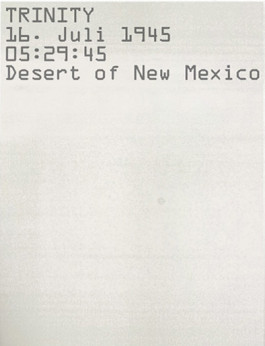
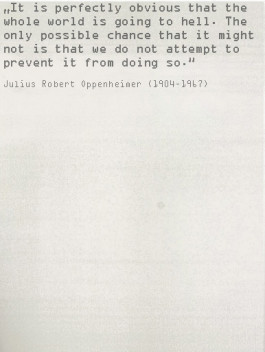
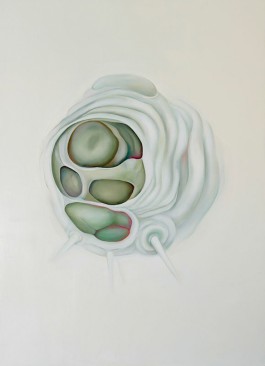
Trinity I, 2012, Öl auf Holz
On 16 July 1945 at 05:29:45 in the desert of New Mexico the greatest weapon of mass destruction known to mankind up to that point Had been detonated. Julius Robert Oppenheimer, a man of great philosophical interest and head of the "Manhattan Project" (codename for USA's nuclear weapons development project), gave this TEST in reference to a poem by the mystic writer John Donne the name "TRINITY". "Batter my heart, tree-personed god (...) " , HOLY SONNET XIV, John Donne, 1896
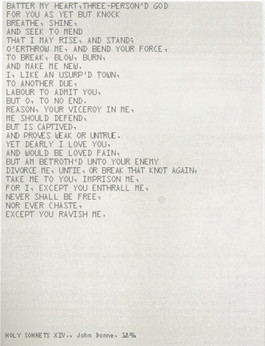
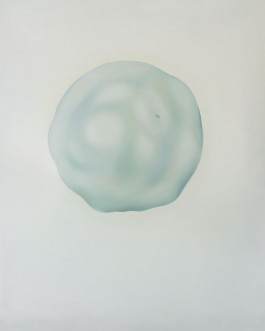
TRINITY III, 2012, 125 x 100 cm, oil on woodpanel
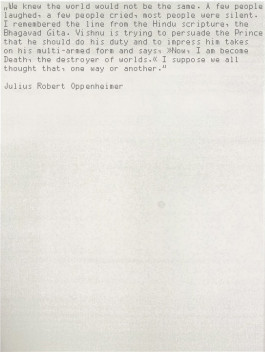
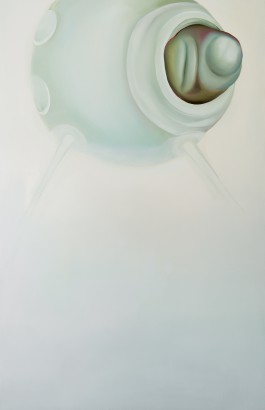
TRINITY II, 2012, 140 x 90 cm, oil on woodpanel
The TRINITY-SERIES was inspired by photos of the first billionths of a second of the world‘s first atomic bomb test – the TRINITY-TEST conducted by the United States Army and captured by Harold Edgerton on 16 July 1945 at 05:29:45 in the New Mexico desert. The testing of the the biggest weapon of mass destruction ever known to mankind until then ironically was named TRINITY by Julius Robert Oppenheimer, the head of the Manhattan Project (Codename for the Nuclear re- search project), after a poem by the mystic John Donne....
What did J. Robert Oppenheimer see or feel when looking at the explosion? This extreme brightness, heat, a burst of power, a triumph, a way out, shame, ecsta- sy ... bliss? Perhaps all at the same time? There‘s probably a mysterious state of loosing willpower people sometimes fall into – an urge, an inner heat that makes us unable to see clearly and think about the big picture.
Oppenheimer later said that when he saw the explosion, he thought of the fol- lowing verses from the Indian Bhagavadgita: where Krishna (an avatar of God) reveals itself in full splendor to the warrior prince Arjuna. The narrator describes the multi-armed pure visage of God as follows:
If the radiance of a thousand suns
Were to burst at once into the sky
That would be like the splendour of the Mighty One...
I am become Death,
The destroyer of worlds.
The irony of it all is that the German physicists of the time didn't do any seri- ous research in this field and were in fact convinced that the reports they heard about their colleagues' work in the United States were mere propaganda. The "nuclear arms race" didn't actually exist during World War II and was run only by one side. Despite the fact that a petition was circulated among scientists of the project, pleading not to use the bomb against civilian populations, as it would be both immoral and unnecessary, Oppenheimer opposed it and the infamous destruction we all know of ensued. Although he later confessed feeling horrified and guilty, he never seems to have expressed any real regrets to have headed this programme of destruction. He merely stated that:
„In some sort of crude sense which no vulgarity, no humour, no overstatement can quite extinguish, the physicists have known sin; and this is a knowledge which they cannot lose.“ J. Robert Oppenheimer
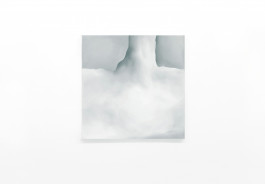
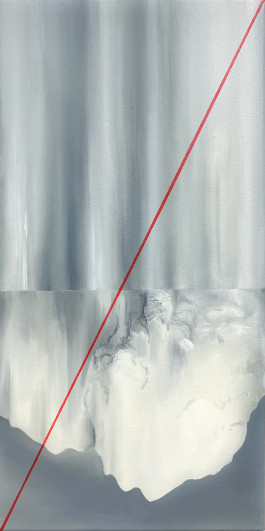
NOPE, 2024, 60 x 30 cm, oil on canvas
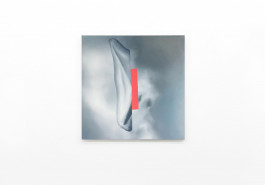
MAY THE FORCE BE WITH YOU, 2023, 50 x 50 cm, oil on canvas